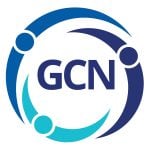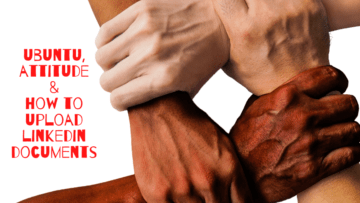Do you stand out? In today’s competitive job market, the key to stand out in job applications is thorough preparation and customization. Whether you’re actively job hunting or exploring new opportunities, being well-prepared gives you a sense of control and empowerment.
From resumes and cover letters to LinkedIn profiles and networking, every piece of your career toolkit should work together in harmony, each contributing to the narrative of your professional journey and enhancing your chances of success.
1. Build a Solid Base Resume
Your first step? Develop a strong foundational base resume. The base resume isn’t the version you submit—it’s the version you tailor. A base resume should include your entire professional history and be rich in keywords and metrics. You’ll use this as a master document to customize each application based on the job description.
Why Metrics Matter
When listing your accomplishments, use numbers, percentages, and dollar amounts to illustrate impact. These metrics make your achievements more tangible and boost your confidence in your professional abilities.
For example, you can weave these snippets below into more robust and descriptive bullet points:
- Increased sales by 25% YoY
- Reduced customer onboarding time by 30%
- Managed $2.5M project portfolio
Results speak louder than responsibilities, but make your content skimmable and scannable to the human eye.
2. Leverage Your Resume for LinkedIn
Once your resume is in top shape, use it to build your LinkedIn profile—especially the Experience section. Unlike resumes, you only get one LinkedIn profile. Make it count by ensuring your content is:
- Metric-driven
- Keyword-rich
- Aligned with your career goals
Your LinkedIn profile is your digital handshake. It should stand out and shine as brightly as your resume, if not more.
3. Tailor Every Cover Letter
A generic cover letter won’t cut it. Craft a customized, compelling cover letter for every role. Start with a strong hook. Why this company? Why now?
“I’ve followed [Company]’s journey in [specific area], and I’m excited about the opportunity to contribute to your mission.”
Then, share a relevant story that connects your experience to the company’s needs.
End with confidence:
“I’d welcome the opportunity to bring my skills to your team and contribute to your continued success.”
Pro Tip: Avoid overusing ChatGPT-generated cover letters without personalizing them. Recruiters can spot them a mile away.
4. Use Keywords Strategically
Mirror the job posting’s “skills and qualifications” section. Weave in relevant key phrases naturally throughout your resume and LinkedIn profile.
Align your language with:
- The job description
- The company’s mission
- Industry terminology
Many companies use ATS systems (Applicant Tracking Systems) to filter and rank job applications. These systems scan for specific keywords and phrases from the job description. If you don’t include these keywords in your application, your resume may not reach human eyes.
5. Focus on Formatting
To make your resume easily scannable:
- Use bullet points, not paragraphs
- Keep each bullet 1–2 lines maximum
- Use bolding sparingly for the metrics
- Choose clean, professional formatting
Hiring managers spend seconds on an initial scan—make every second count.
6. Show You’ve Done Your Homework
Show that you’re not just looking for a job—you’re looking for this job.
Whether in your cover letter, email outreach, or interviews, show that you:
- Understand the company’s values
- Admire something specific about the team or mission
- See a personal connection to the role
Example:
“I was excited to see your commitment to sustainability through [X Initiative]—a value I share and have championed in my last two roles.”
7. Network Your Way In
Never underestimate the power of connections. Use LinkedIn to reach out to current employees, hiring managers, or team members.
A simple message can open doors:
“Hi [Name], I’m interested in learning more about the culture at [Company]. I’d love to hear what it’s like working there. Would you be open to a short chat?”
Referrals increase your chances of getting an interview. Don’t skip this step.
8. Practice Makes Perfect
If your resume, LinkedIn, or networking skills are rusty, it’s time to brush up on new trends and techniques. The Great Careers Group hosts regular career education events to help you:
- Optimize your resume and LinkedIn profile to stand out
- Improve your networking confidence
- Prepare for interviews
- Navigate today’s job market with clarity
You’re not just looking for a job—you’re looking for the right fit. Put in the effort now to stand out later. Every tailored resume, personalized message, and thoughtful application brings you one step closer to your next opportunity.
NEXT STEPS
- Subscribe to my newsletter on LinkedIn™ for bright ideas on how to manage your career.
- If you need a resume or LinkedIn™ profile to get you to your next step, book a call to chat! Can’t beat a free discovery call!
- Join as a member at https://greatcareers.org/membership of the #1 business networking association on the Philadelphia Business Journal’s Book of Lists five years in a row!
- To support our charity at KeepOnSharing.com and use the referral code Career
- Follow #GreatCareersPHL
BIO
Lynne M. Williams is the Executive Director of the Great Careers Network, a volunteer-run 501(c)3 nonprofit organization that provides career development and networking connections for 1) job seekers in career transition, including veterans, and 2) employed and self-employed for career management.
Aside from writing keyword-focused content for ATS resumes and LinkedIn profiles, Lynne is writing her doctoral dissertation on LinkedIn for Job Seekers. She is a contributing author on “Applying to Positions” in Find Your Fit: A Practical Guide to Landing the Job You Love, along with the late Dick Bolles, the author of What Color is Your Parachute?, and is also a speaker on career topics.




